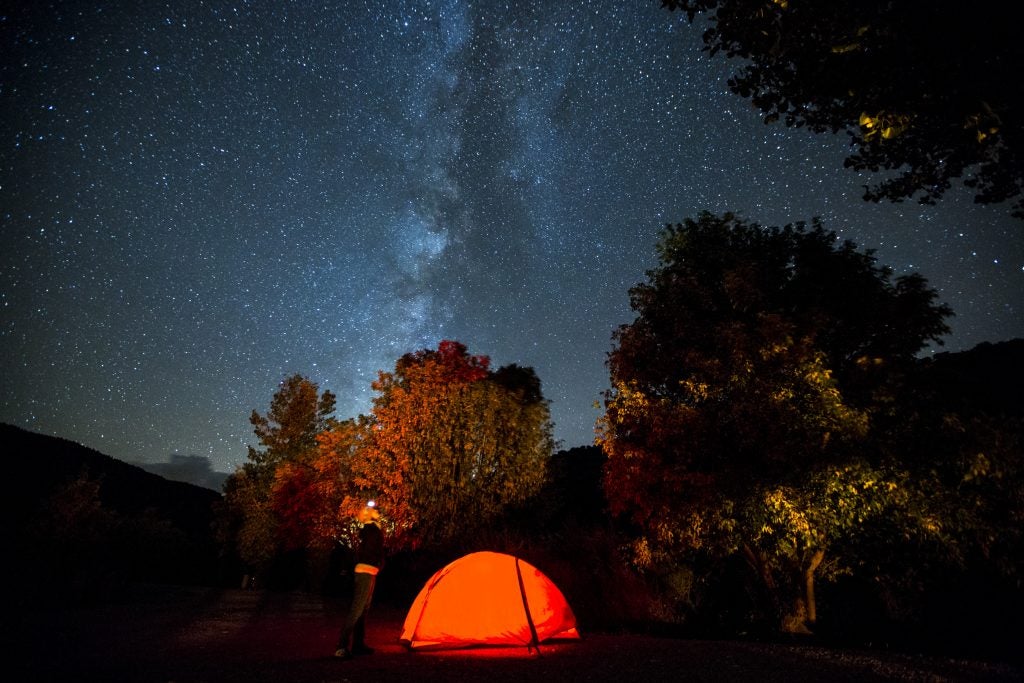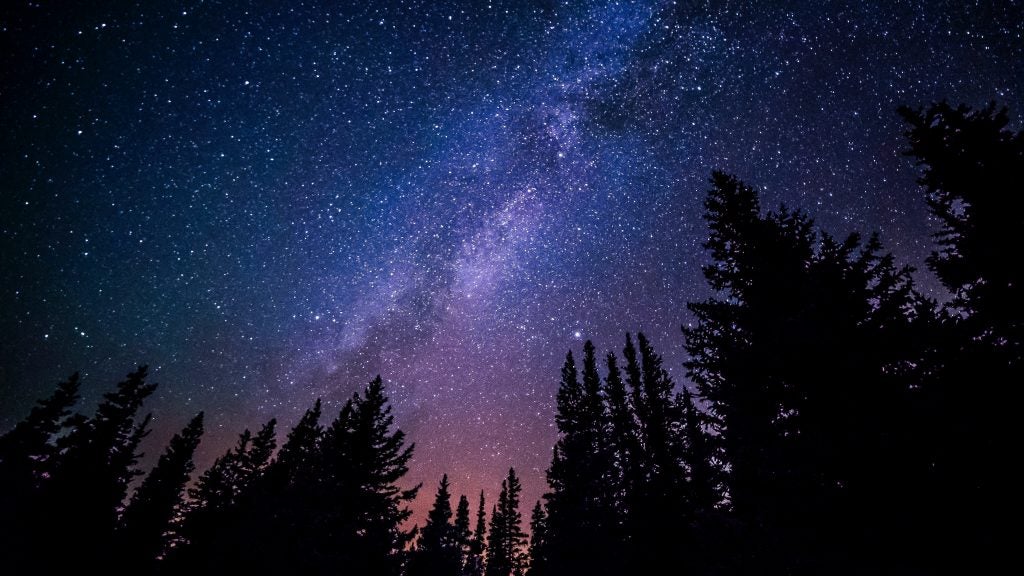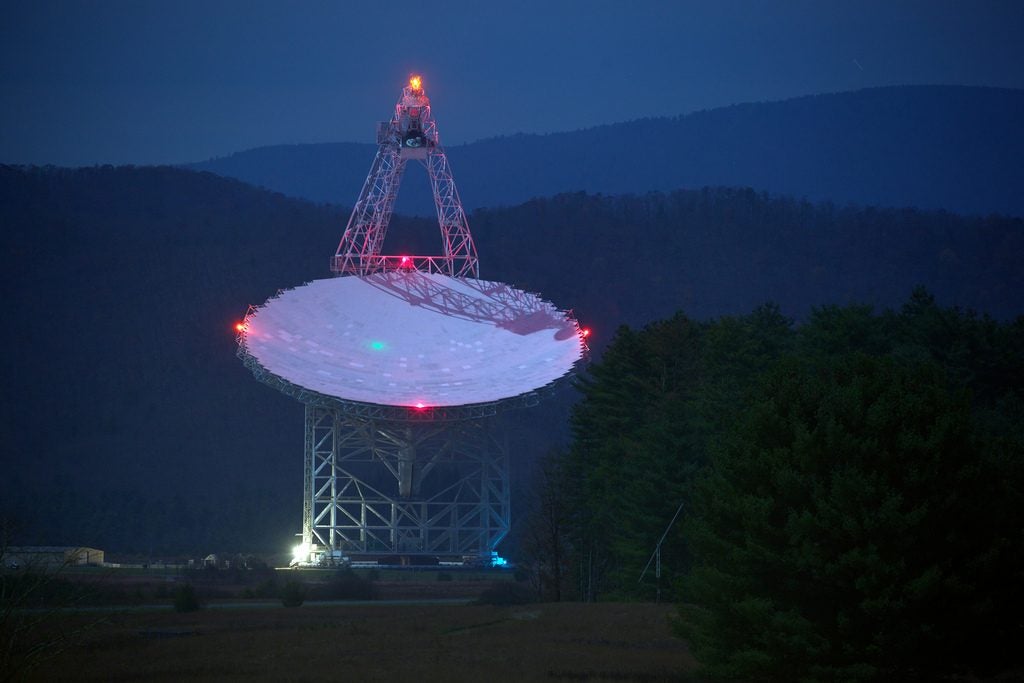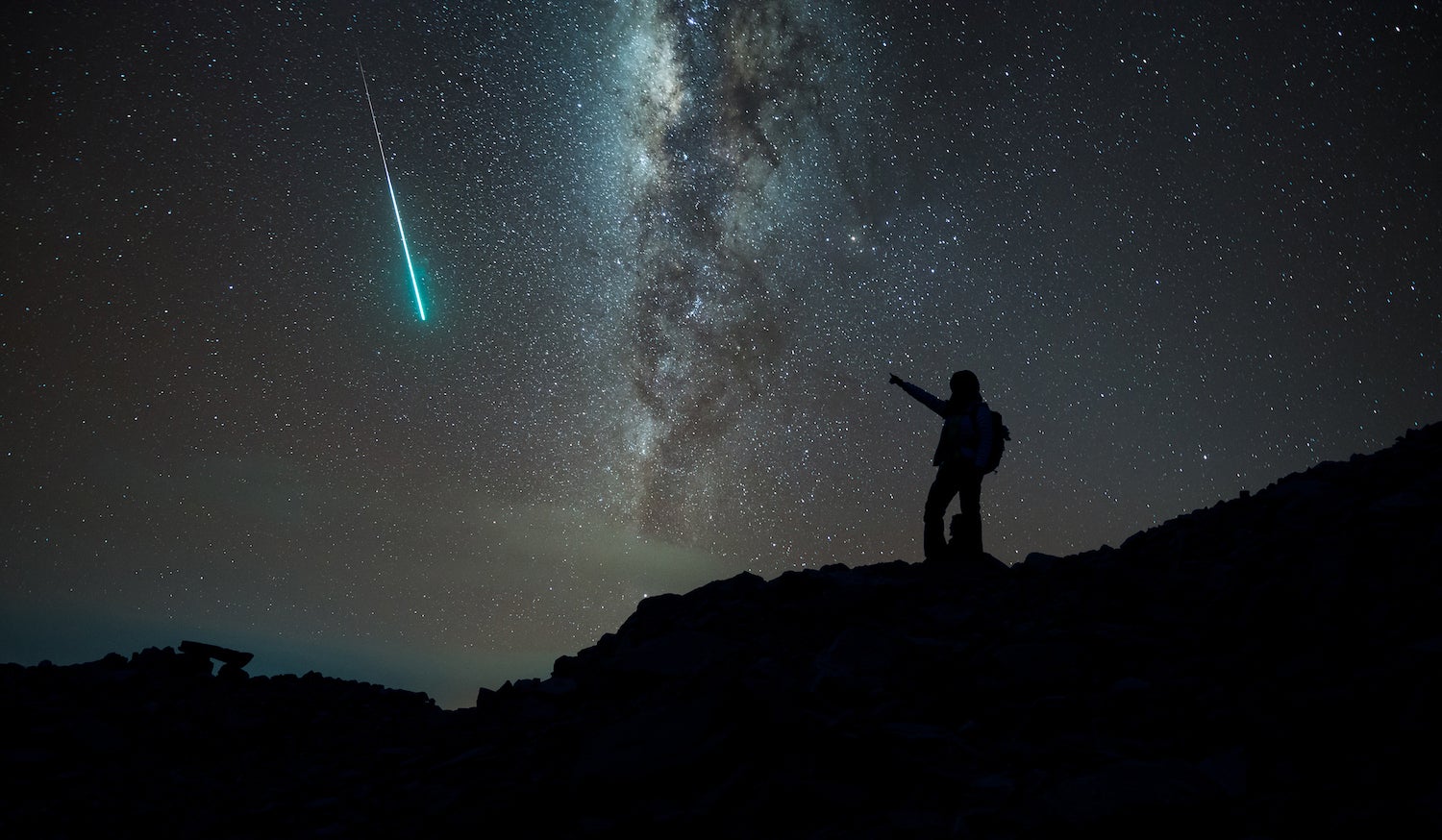Grab your Sedona blanket and some popcorn, we’re going stargazing! This article on finding camping near the Perseid Meteor Shower is brought to you by our friends at Roanline – the East Coast’s premier outdoor clothing marketplace. Shop for cool tees, accessories, swimwear and more, from brands you love and some you’ll soon discover.
August means the end of summer is creeping up on us. The kids are shopping for back to school supplies and despite the lingering heat, there’s a sense of change in the air. It also means the night sky will put on its yearly show – the Perseid Meteor Shower.
This annual light show typically produces at least one visible meteor per minute, or 60 to 70 per hour. Other years have produced even more. In 2016, the Perseids lit up the sky with 150 to 200 meteors per hour! Best viewed in the Northern Hemisphere, this nighttime show is caused by Earth passing through the Perseid cloud. This ‘cloud’ is actually the stream of particles and debris trailing the Swift-Tuttle comet.
Where to Watch the Perseid Meteor Shower on the East Coast
For those east coast campers looking to experience nature’s light show on the nights between August 11-12 and 12-13, there are some special places that are perfect for doing just that:
Dark Sky Parks

One of the best ways to view the night sky is at a certified International Dark-Sky Association (IDA) Dark Sky Park. We have the National Parks Service and other conservancy organizations to protect our wild lands, and this is the organization that protects our night skies. The IDA is the world’s defender against light pollution or the inappropriate use of artificial light at night.
IDA certified Dark Sky Parks are areas classified as “possessing an exceptional or distinguished quality of starry nights and a nocturnal environment that is specifically protected for its scientific, natural, educational, cultural heritage, and/or public enjoyment.”
Stock Up On Ranger-Tested Outdoor Apparel From Roanline
Cherry Springs State Park: Pennsylvania
Cherry Springs State Park is the darkest known area east of the Mississippi. This Certified IDA International Dark Sky Park is surrounded by the Susquehannock State Forest. Watch the pristine star-filled night sky from the park’s Astronomy Field, campground, and the Night Sky Public Viewing Area. You can view the Milky Way, various planets, nebulae, galaxies, stars, and other astronomical bodies.
Visitors will enjoy this park night or day. Hikers and backpackers can put on some miles with nearby access to 85 miles of trails. The park also provides a variety of interpretive programs and environmental education year-round. Visitors can learn more about the natural landscapes and historical significance by participating in guided walks, public stargazing programs, guest speaker presentations, hands-on activities, and campfire programs.
Sleep under the stars at the on-sight Cherry Springs State Park campground. Be a good neighbor by bringing red-filtered flashlights and red light headlamps so you do not disturb the vision of other park visitors. You can easily make your own red-filtered flashlight by taking red plastic wrap and covering the tip of the flashlight.
Blue Ridge Observatory and Star Park: North Carolina

Image Courtesy of Wikimedia Commons
Blue Ridge Observatory and Star Park is the first designated Dark Sky Park in the southeast and is the second darkest sky east of Mississippi. This park also offers visitors a unique opportunity with the on-site observatory that’s open to the public. The observatory is home to a 34-inch Newtonian telescope which the is the largest public telescope in the southeast.
Although, the park doesn’t allow overnight camping, you have plenty of choices for camping in Tennessee or North Carolina. While you wait for the sun to set, take advantage of your daylight by exploring. Take in the mountain views and many waterfalls by hiking the Blue Ridge Parkway.
Staunton River State Park: Virginia

Staunton River State Park was awarded Virginia’s first Dark Sky Park and the East Coast’s third, thanks to advocates who have made efforts to keep light pollution away from the park. Unnecessary lights have been removed and remaining light fixtures updated to comply with IDA requirements.
The night skies aren’t the only reason to visit Staunton River State Park. Visitors have access to Virginia’s largest lake, Buggs Island Lake, and shoreline along the Dan and Staunton rivers. You can stay in one of the small historic cabins built by the Civil Conservation Corps in the 1930’s. Or set up your tent in the Staunton River State Park campground. Visitors can enjoy the Olympic-size swimming pool with slide, a wading pool, three playgrounds, and tennis and volleyball courts. Fill your days with freshwater fishing, boating, andexploring nearly 20 miles of multi-use trails. When dusk comes around, claim your spot in one of the meadows. The park also rents telescopes.
Cape Hatteras National Seashore: North Carolina
Image Courtesy of Flickr
According to John Barentine, the program manager for the IDA, “artificial light can confuse freshly hatched sea turtles, causing them to crawl away from the safety of the ocean. Light pollution can negatively affect migrating birds and the croaking habits of frogs.” This park is making strides to be awarded Dark Sky Park status. If the IDA awards the designation, then Cape Hatteras would become the world’s first Dark Sky Park located on a coastline.
Camp at Cape Point to avoid crowds. Fall asleep to the sound of the ocean. Wake up at dawn to catch some sunrise surfing. Explore the nearby lighthouse. Sit on the beach to watch the sun melt into the ocean. While you wait for the Perseid Meteor Shower to begin, make sure to check for Mother Nature’s other light show in the waves. This stretch of coast is home to bioluminescent plankton that glow in the shallow water.
Green Bank Observatory: West Virginia

Image Courtesy of Wikimedia Commons
This valley is home to the Green Bank Telescope, the world’s largest fully steerable telescope. Weighing in at 17 million pounds and nearly 500 feet tall it is also the largest moving structure on land. Scientists travel from around the world to use the telescope.
Don’t think you’ll be live streaming the Perseid Meteor Shower, though. The government has classified the area as a National Radio Quiet Zone which limits cells phones and WiFi. You’ll just have to wait to upload those pics. Since this is a government mandated ‘unplug’ zone, you can relax and enjoy the disconnect from the constant buzz of technology.
The Observatory does not offer camping (except for educational field trips). However, there is plenty of nearby camping in Virginia or West Virginia.
Although not considered part of the east coast, the countries newest Dark Sky Park, John Glenn Astronomy Park, officially opened June 2018. Located in Ohio’s Hocking Hills State Park it is one of the few locations in the state where the night sky is nearly free of light pollution.
You can win free gear from Roanline and 20 other brands by reviewing campgrounds on The Dyrt. Share past camping experiences, photos, and videos to earn points towards monthly prizes in The 2018 Great Camping Giveaway!
Related Campgrounds:
- Assateague Camping, Assateague, MD
Popular Articles:
Articles on The Dyrt Magazine may contain links to affiliate websites. The Dyrt receives an affiliate commission for any purchases made by using such links at no additional cost to you the consumer.



